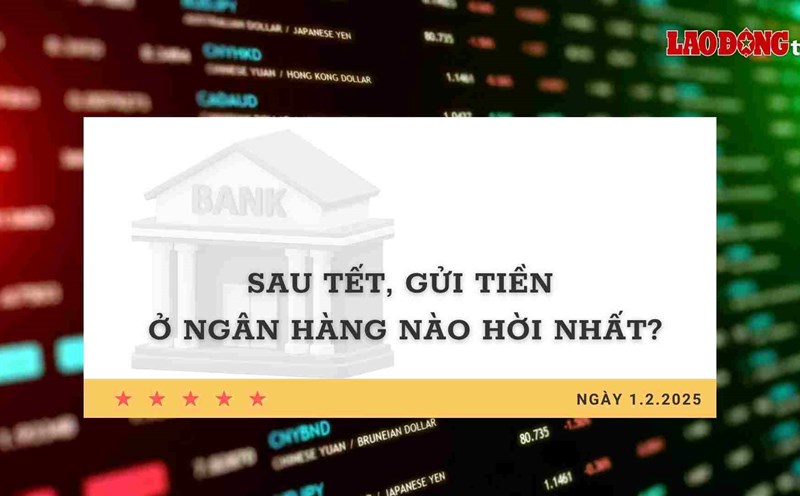Increasing deposit interest rates leads to lending pressure
After an average increase of about 0.5% in savings interest rates from mid-2024, banks - especially private and small-scale commercial banks - are tending to adjust their deposit interest rates to attract savings deposits. This is considered a necessary step to ensure sufficient capital for lending activities in the context of credit growth expected to reach about 16% next year.
According to reports from Vietcombank Securities Company (VCBS) and MB Securities (MBS), although 12-month savings interest rates at most banks remain below 6% per year, the slight increase in deposit interest rates in the second half of the year has had a spillover effect on lending interest rates. Experts believe that lending interest rates may increase by about 0.5-0.7% compared to the decrease of nearly 1% last year, to offset pressure from capital mobilization.
The strength of the USD and its impact on exchange rates
Besides the endogenous factor from mobilization activities, the USD still maintains its strength in the context of a stable US economy, creating considerable pressure on the exchange rate.
Sharing with the press, TPBank leaders said that when the exchange rate increases, banks are forced to consider not to reduce the competitiveness of credit. From there, adjusting lending interest rates becomes a tool to balance the pressure from the monetary market and the goal of maintaining credit growth.
Monetary policy and orientation of the State Bank
The general assessment from experts shows that the State Bank will continue to maintain a flexible monetary policy to support economic recovery. The report on the results of the survey on business trends of credit institutions in the first quarter of 2025 said that credit institutions may slightly increase deposit and lending interest rates by 0.2 to 0.3 percentage points. This is to ensure abundant capital to meet credit growth targets as well as control exchange rates in the context of closely monitored inflation.
The Prime Minister has also directed to focus on reducing the interest rate level, especially strictly controlling the mobilization interest rates of commercial banks. This direction not only helps to remove difficulties for people and businesses but also ensures that credit capital is transferred to effective production and business activities.
Banking experts say that the move to adjust deposit and lending interest rates is a natural reaction of the financial market when faced with many internal and external pressures. In the context of increasingly fierce credit competition, banks, especially small-scale banks, tend to apply higher interest rates to attract savings deposits. This adjustment is considered necessary to ensure business capital for the whole year, especially when bad debt in the banking sector remains at a worrying level.
In general, in 2025, although the pressure from interest rates and the USD exchange rate may lead to a slight increase in lending rates, this is also a turning point for the banking system to ensure capital sources for credit activities and support economic growth. The flexible monetary policy of the State Bank of Vietnam and the direction of the Government will play a key role in stabilizing interest rates, creating favorable conditions for production and business and stabilizing people's lives.











